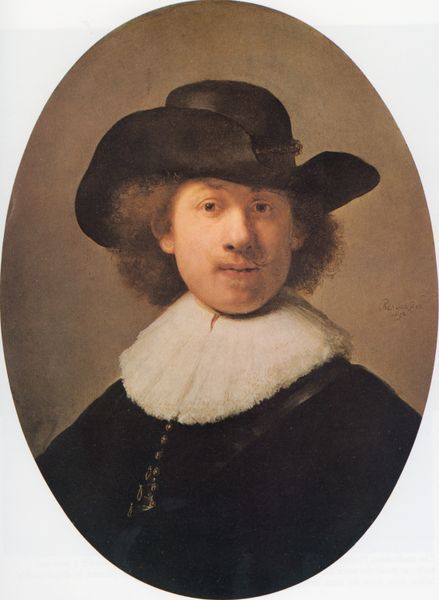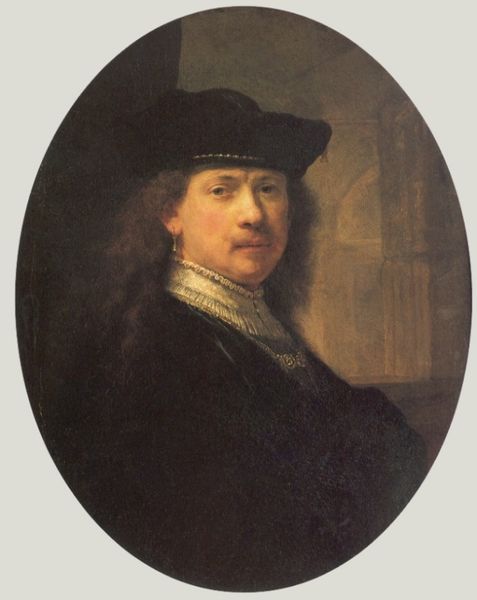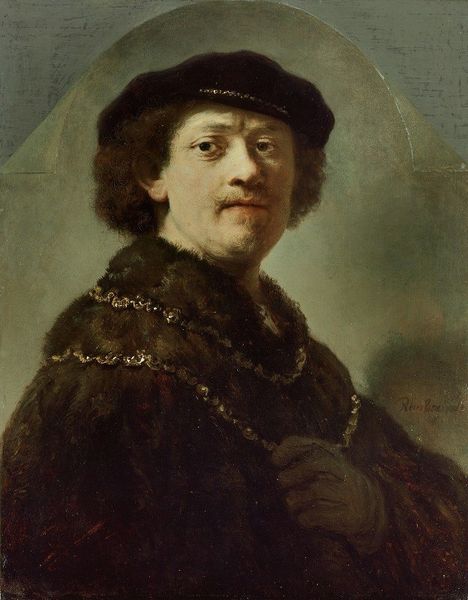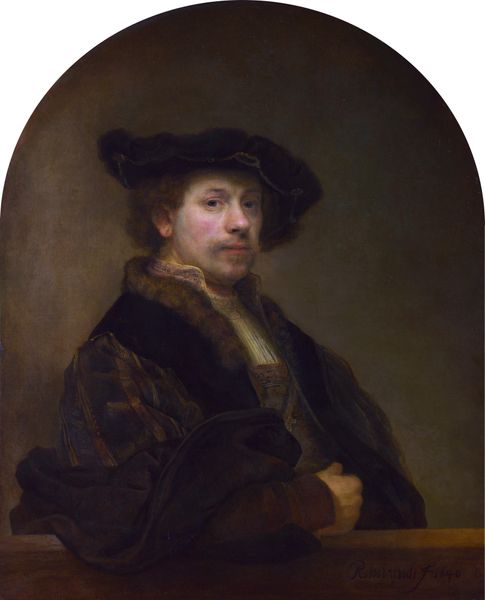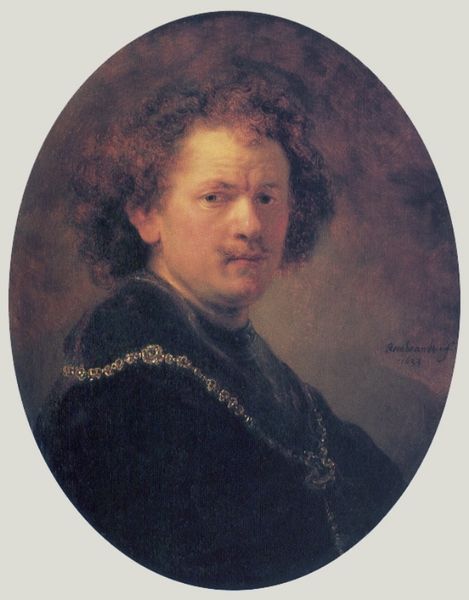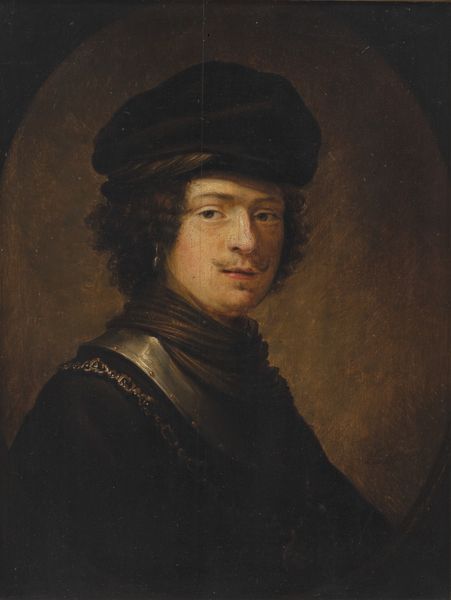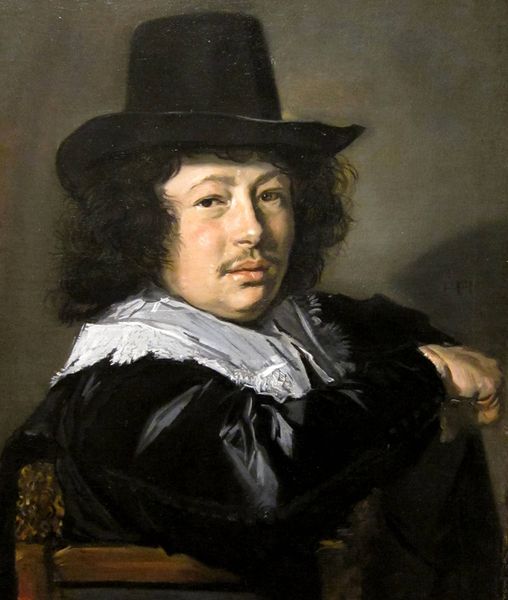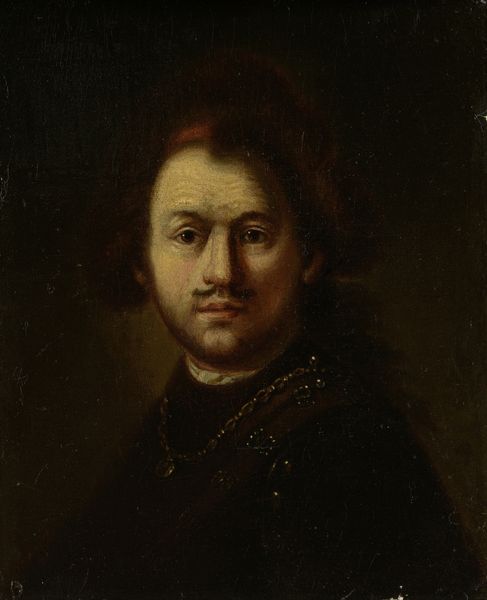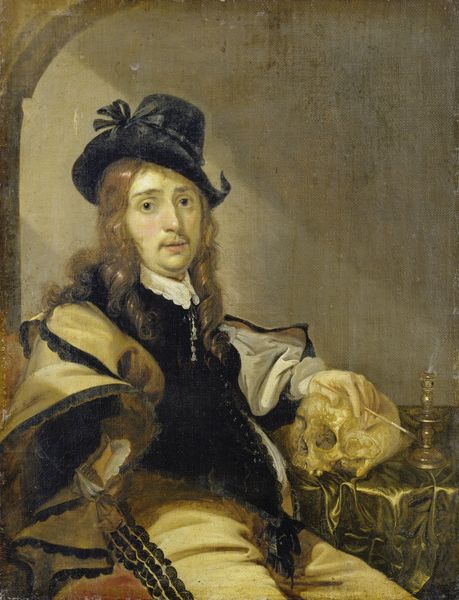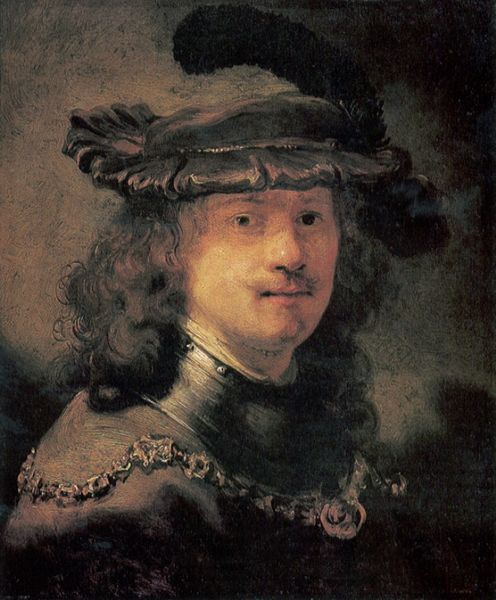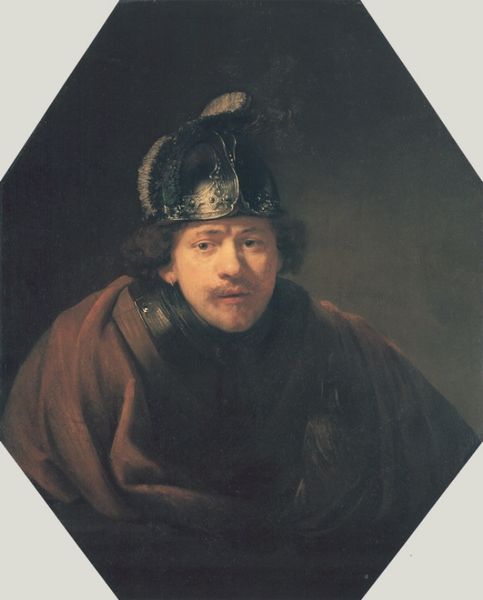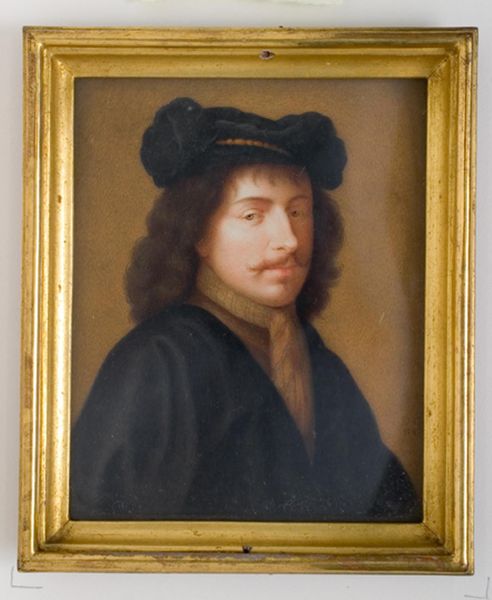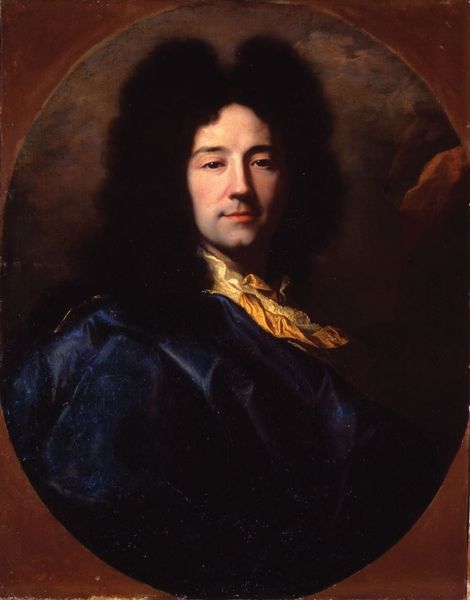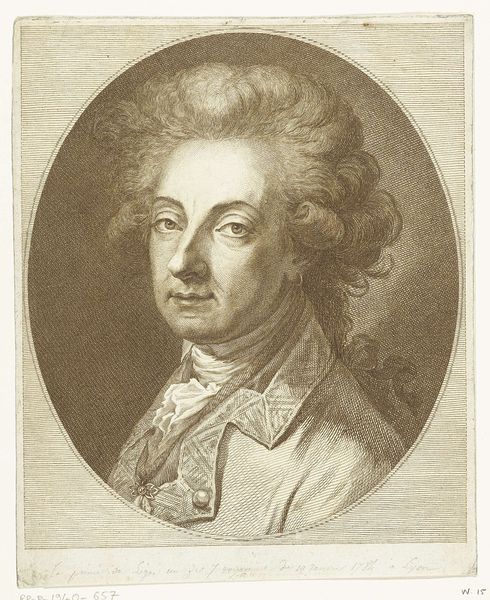
painting, oil-paint
#
portrait
#
self-portrait
#
baroque
#
dutch-golden-age
#
painting
#
oil-paint
#
portrait art
Dimensions: 53 x 70 cm
Copyright: Public domain
Editor: Here we have Rembrandt van Rijn's "Self-Portrait with Hat and Gold Chain," painted in 1633. I find the intense gaze and shadowed face quite intriguing, almost confrontational. What stands out to you in this piece? Curator: Beyond the mastery of light and shadow, let's consider the politics of representation at play here. The self-portrait, particularly in 17th-century Dutch society, was a statement of identity and social standing. The gold chain, the velvet beret - what message is Rembrandt crafting about his place in the world, and for whom? Is this a bid for entry into a higher social stratum, or something more complex? Editor: That’s an interesting perspective. I guess I just saw it as a simple portrait but what you say makes sense when you consider he was building his career. Does the fact that it's a self-portrait complicate our interpretation? Curator: Absolutely. Whose gaze are we truly meeting? Rembrandt’s, the artist establishing his persona, or ours, centuries later, judging that persona through the lens of history? Furthermore, who had access to images like this, and what impact might that have had? The display of wealth is calculated; what power dynamics does this reflect, both then and now? Editor: It makes me rethink my initial reaction. Instead of just an intense gaze, maybe it's a constructed image, carefully designed. Curator: Precisely! The gaze becomes a tool. Think of Judith Butler's work on performativity: identity isn't fixed but actively constructed. Rembrandt, in this portrait, is performing a certain kind of self, embedding himself in a particular social and artistic context. How might this relate to his later, more unflinching self-portraits as he aged? Editor: I never thought about portraiture this way, as a performance of identity. It shifts the whole meaning of the piece for me. Curator: And that’s precisely where the exciting possibilities of art history lie – using visual analysis to unlock deeper cultural narratives.
Comments
No comments
Be the first to comment and join the conversation on the ultimate creative platform.
